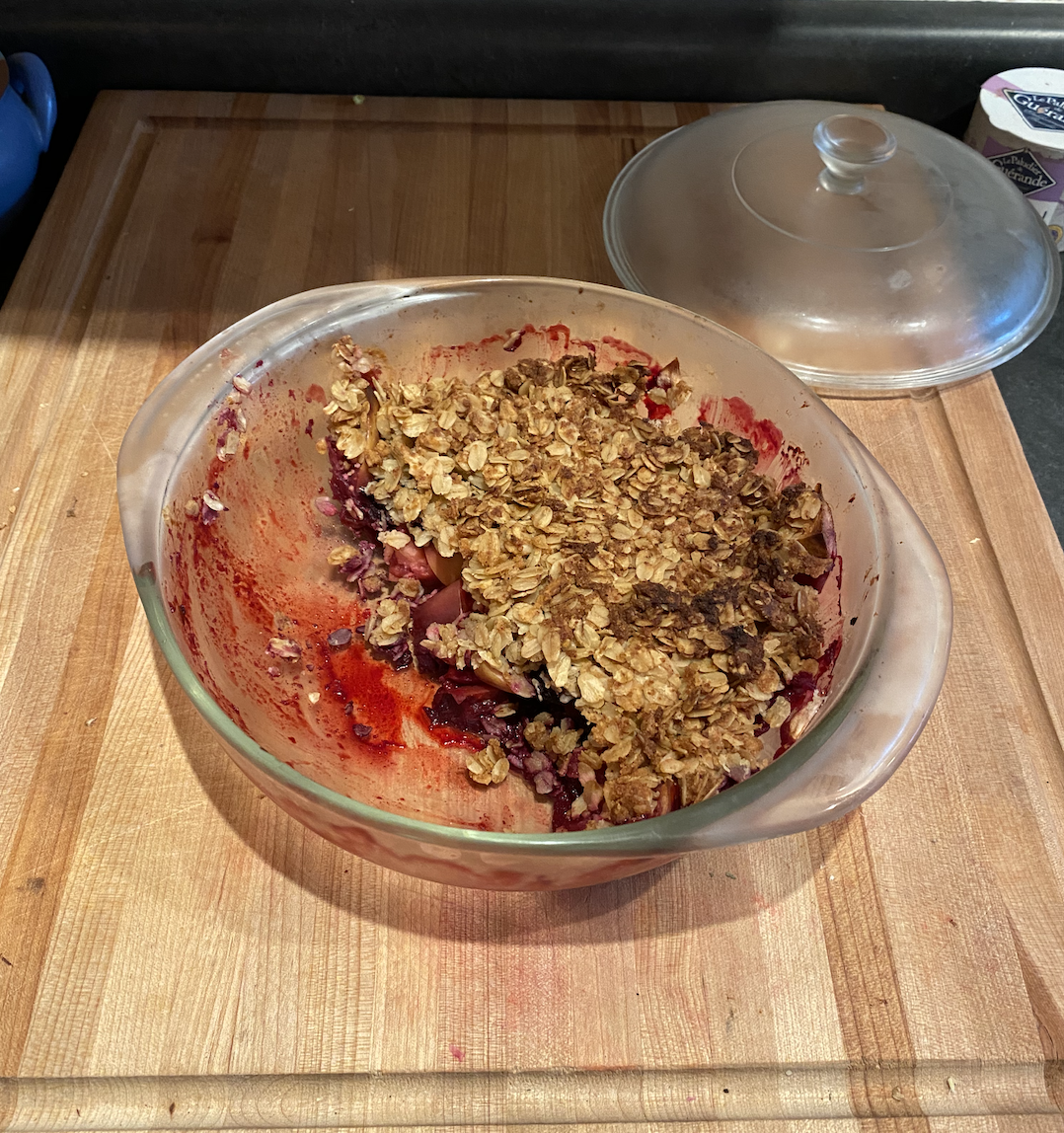This is an easy and basic technique you can apply to almost any vegetable. Lacto-fermenting the vegetables turns them into a live probiotic food, preserves them so they don’t require refrigeration, and boosts their safety and nutritional value. The microbes add vitamin B12 and K, and pre-digests some of the fiber. The ‘lacto-’ part means that a lot of the fermentation is performed by the microbe species Lactobacillus, among many thousands of other species. The microbes in the ferment metabolize the plant sugars to release lactic acid and other delicious byproducts, resulting in a tangy funky umami-rich flavor profile.
Ingredients:
Choose one or some of the following to equal a pound of vegetables (more is fine, you’ll just be chopping for longer).
Radishes (any color - the black ones are very metal), Daikon radishes (the purple ones are are trippy), carrots (any color, so rich!), red peppers, turnips, rutabaga, onions (red, yellow, green), garlic cloves, ginger coins, Brussels sprouts, fennel, Kohlrabi, broccoli, cauliflower, cabbage (red or green), celery root, baby bok choi, green beans, cauliflower chunks, even leaves like kale, collards, spicy mustard can go in. Herbs and spices are delicious and fun to add, so collect any or all of the following: cumin, coriander, black peppercorns, red pepper flakes, fennel, rosemary, lemon or other citrus zest. You’ll make your own signature flavor ferment.
Materials and equipment:
Regular salt*, water, jars with lids (any size - I use mason or ball jars with plastic lids), a measuring cup and measuring spoons, maybe a kitchen scale, chopping board, big and small knife.
Technique:
1) Chop the vegetables. Get creative and make shapes (hearts, flowers, triangles, squares…) and pack the veggies into the jars. Either tumble them in or arrange them artfully. You can layer them with slices of onion, or throw in handfuls of whole spices. Leave at least 2 inches of headroom at the top of the jar.
2) Make 2% brine (1 T salt/cup water = approximately 2%*) and pour it in to cover the vegetables, or you can get fancy and use an online brine calculator. Optional; you can pour in a dollop of liquid from a previous fermentation - sauerkraut, fermented pickles, yogurt whey - if you wish to give your ferment a boost. Not necessary though, You’ll create an environment for the correct microbe populations to thrive, boom and bust setting the stage for the next wave of microbes.
3) Put a lid loosely on the veggies and put them in a cupboard at room temperature. Wait 4-5 days, resubmerging the veggies every morning - keep them underwater, the microbes need an anaerobic environment. Taste them - when they are tangy enough to your palate, tighten the lid and put them in the fridge. They will continue to ferment, but at a much slower rate than at room temperature.
Some of my favorite combinations:
white daikon spears with black peppercorns and red pepper flakes - put a spicy fermented spear into a martini (gin, of course) as a savory addition replacing an olive!
coins of variously colored winter radishes pack beautifully into a jar
purple-topped turnip rounds with red onion slices, black peppercorns, coriander and green onion lengths - amazing on a salad or with a grilled entrée
green cabbage sauerkraut with outrageous pink watermelon radish hearts or triangles along the sides make a lovely gift
halved dark green Brussels sprouts with whole cumin, coriander and black peppercorn
There are so many possibilities! Let me know what you discover!
_____________________________
* Salt caveat: Salt (NaCl) is part of the environment you create to nurture the desired microbes and discourage the wrong ones (for example Clostridium Botulinum or E. Coli). If you are creating a ferment for a low-salt-person, you can decrease the brine concentration to 1% and add some sour/acidic cloudy liquid from a previous ferment - called “backslopping”. This immediately decreases the PH (increases acidity) and gives the desired microbe populations an advantage to out-compete undesirable competitors. Be assiduous about keeping the vegetables underwater, and monitor the ferment vigilantly. Your nose will tell you if anything is wrong.
In terms of food safety, fermented food is very safe. C. Botulinum and E. coli cannot survive in the low PH (acidic) environment rapidly created during the first phases of fermentation, such that the beneficials rapidly out-compete any competition.




